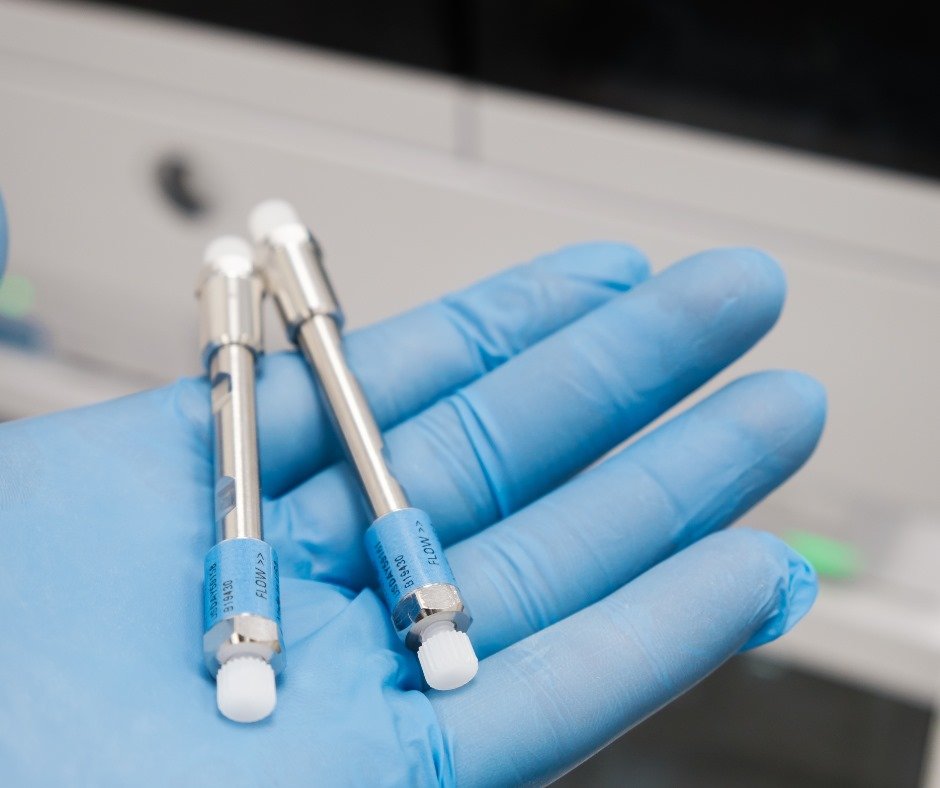Top 10 Interview questions about HPLC columns.

1. What are the different types of HPLC columns?
Reversed-phase columns: These are the most commonly used, where the stationary phase is nonpolar (e.g., C18). Polar compounds are retained longer.
Normal-phase columns: The stationary phase is polar, while the mobile phase is nonpolar. Nonpolar compounds are retained longer.
Ion-exchange columns: Used for separating charged species (anions or cations) based on their interaction with charged groups on the stationary phase.
Size-exclusion columns (gel filtration): Separate compounds based on size, with larger molecules eluting first.
Affinity columns: Used for specific interactions, such as biomolecular separations.
2. What factors influence the selection of an HPLC column for a method?
Nature of the sample: The chemical properties (polar, nonpolar, charged) determine the column type.
Separation efficiency: The column should provide the desired resolution for the compounds of interest.
Column dimensions: Length, diameter, and particle size affect resolution, flow rate, and analysis time.
Detection method: Some columns may work better with specific detectors (e.g., UV, fluorescence).
Compatibility with mobile phase: The column must withstand the solvent system and pH used in the method.
3. What is the significance of column dimensions (length, internal diameter, and particle size)?
Length: Longer columns provide better resolution but result in longer analysis times.
Internal diameter: Smaller diameters reduce sample volume and improve sensitivity, but require higher backpressure.
Particle size: Smaller particles provide better resolution due to a greater surface area but increase backpressure.
4. Why is C18 the most commonly used column in HPLC?
Versatility: C18 (octadecylsilane) is a reversed-phase column with good retention for a wide range of compounds.
Hydrophobicity: It’s ideal for separating nonpolar and moderately polar compounds.
Stability: C18 columns are stable over a wide range of pH and solvent conditions, making them widely applicable.
5. What are guard columns and why are they used?
Guard columns are small columns placed before the main column to protect it from contaminants, such as particulate matter or strong solvents, that could damage or foul the analytical column.
They extend the lifetime of the analytical column by trapping debris or impurities before they reach it.
6. How do you regenerate or clean an HPLC column?
Flushing: Use a cleaning solution (usually solvents like methanol, acetonitrile, or a mixture with water) to flush the column.
Solvent gradient: Gradually increase the strength of solvents (e.g., increasing acetonitrile content) to remove residual impurities.
Reversed-phase cleaning: Using a strong solvent (like 100% acetonitrile) can remove non-polar contaminants.
Ion-exchange cleaning: For ion-exchange columns, use a strong acid or base to remove ionically bound materials.
7. What are common causes of column degradation or poor performance?
Overloading: Too much sample volume or concentration can damage the column.
Incorrect solvent use: Using solvents outside the column’s compatibility range (e.g., pH extremes or solvents incompatible with stationary phases).
Contamination: Particulates, oils, or impurities from samples or mobile phases can block or degrade the column.
High pressure: Operating at pressures above recommended limits can cause damage or deteriorate column performance.
8. How can you troubleshoot tailing or fronting peaks?
Tailing peaks: May be caused by sample overload, poor column packing, or interactions between the analyte and the stationary phase. Reducing the sample amount or changing the mobile phase can help.
Fronting peaks: Often due to a column being overloaded, poor mobile phase conditions, or incorrect pH. Reducing sample size or modifying the solvent gradient can resolve this.
9. What does column efficiency mean and how is it measured?
Column efficiency refers to the column’s ability to separate different compounds within a mixture. It’s commonly measured by the number of theoretical plates (N) and the height equivalent to a theoretical plate (HETP).
The more theoretical plates a column has, the better the separation, meaning smaller peaks and better resolution.
10. How do temperature and pH affect column performance?
Temperature: Higher temperatures reduce viscosity, increasing flow rate and decreasing retention time. However, too high a temperature can cause degradation of the stationary phase or sample.
pH: Affects the ionization state of analytes. Some columns have limited pH stability ranges, so extreme pH values may degrade the column or change retention times due to altered analyte behavior.
These factors collectively influence the efficiency, lifespan, and reliability of an HPLC column and the quality of the analysis.
🎓 Discover one of the best Quality assurance courses available — click below to explore the course that’s shaping future QA skills.

